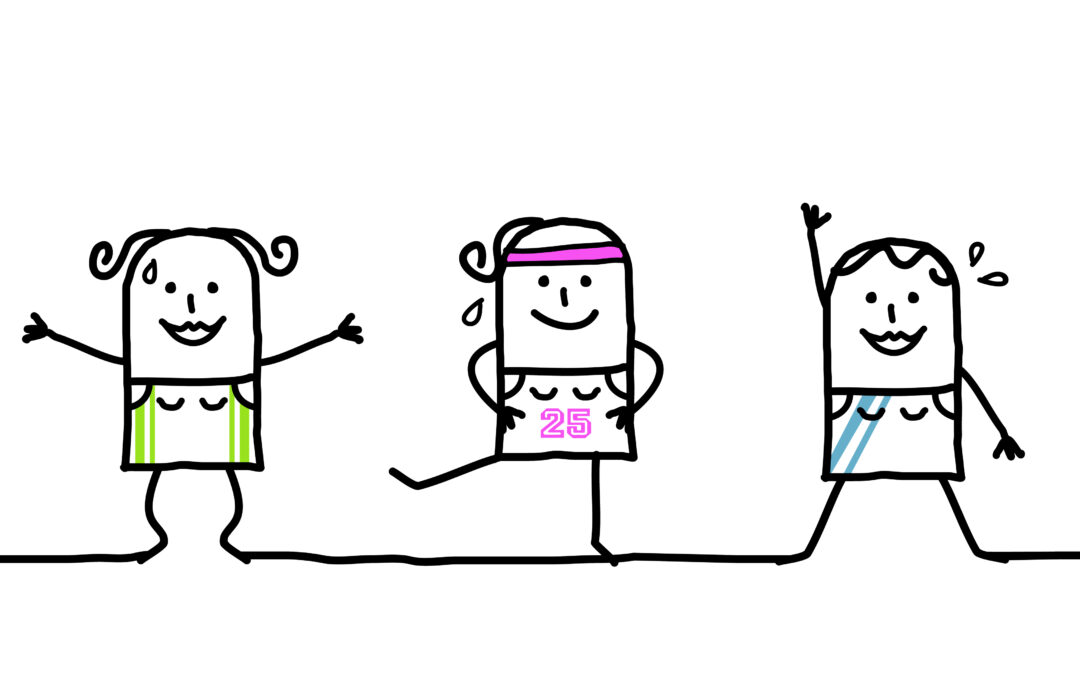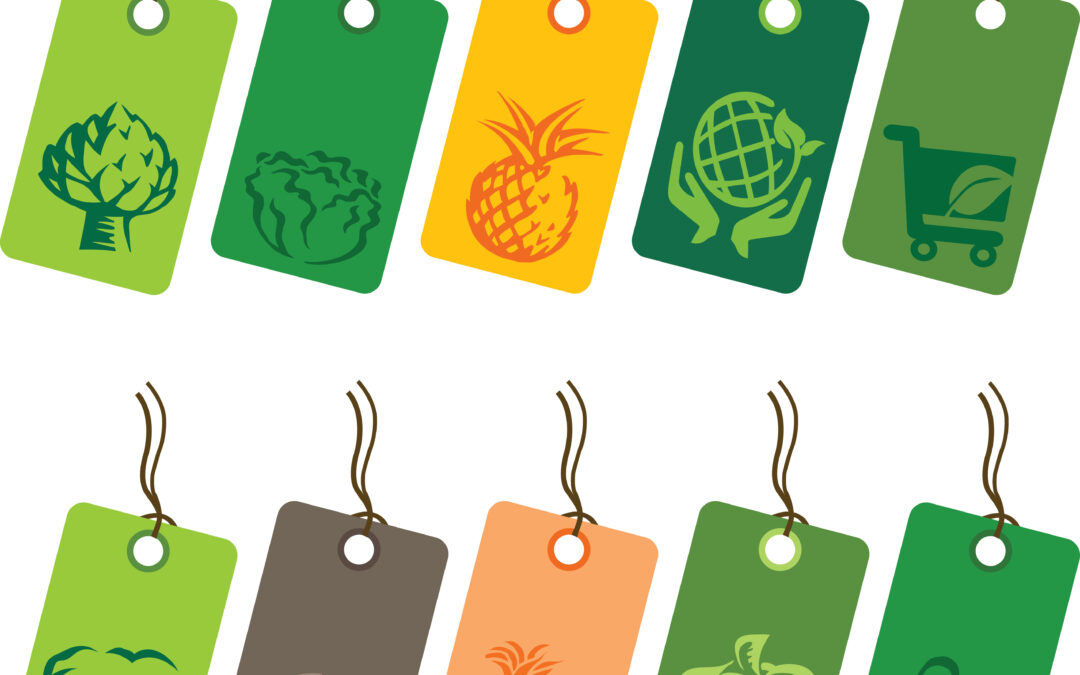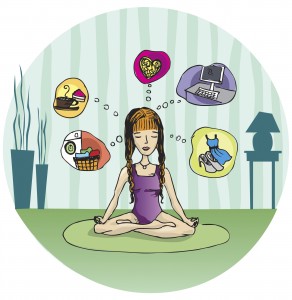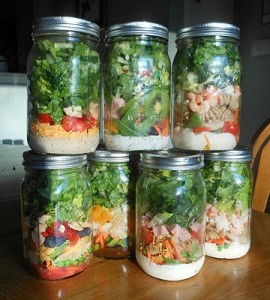
by Deirdre | Jun 29, 2012 | Mindful living
Be warned: this is a post with the kind of scientific minutiae I love to pass along, like as if I was a scientific evangelist. I can hear my parents saying “Why couldn’t you have been this interested in science when you were, say perhaps, actually doing a science degree.” All things in their time, I say.
I read some of the clearest, head-smacking arguments for exercise in a book called Spark: The Revolutionary New Science of Exercise and the Brain by John Ratey. The sound bite is . . . regular aerobic activity raises your personal stress set-point. You know you’ve hit that set-point when you’re gnashing your teeth or maybe your mind bolts off to the negative. Now, this won’t be of interest to people who don’t feel overwhelmed by stress in their lives. Oh wait . . . . NO ONE is dealing with less stress these days.
Change Your Stress Set-Point
Working with your stress response can make you stronger, claims Dr. Ratey. In well-managed doses, stress seems to cause brain cells to overcompensate and organize themselves against future demands – stress inoculation. Assuming that the stress is not too severe and that neurons are given time to recover, the connections become stronger and our mental machinery works better.
Why bother messing with your set-point? Because a higher set-point means that you are more in control of your reactions. And your set-point seems to drop on its own as we get older. I really relate to Pema Chodron, a Buddhist nun, when she said she started working with her reactions to life’s stressors because she didn’t want to become that cranky old person who reacts badly to everything.
Save Your Cells!
We’ve heard about the damaging long term effects of stress, mostly chronic disease and disability. But stress adds up on a daily basis at the cellular level. There are three main types of cell stress: oxidative, metabolic and excitotoxic. All three of them cause damage to cell functioning and lead to cell death, which leads to disease – not so good. The first type of stress is caused by the destructive by-products of normal energy production (oxidative stress). We know these as free radicals and we can help our body neutralize them by eating lots of fresh veggies – also called “getting our antioxidants”. The other types of stress are caused by the cell’s inability to convert glucose to energy (metabolic stress) or by demanding cells to keep working without providing enough energy (exitotoxic stress).
But mother nature is a clever woman, and she’s given us some powerful repair molecules – better known as growth factors – to protect our cells. Stimulating them is your best chance to keep your set-point high and you disease free. They have pesky, hard to remember names – brain-derived neurotrophic factor (BDNF), insulin-like growth factor (IGF-1), fibroblast growth factor (FGF-2), and vascular endothelial growth factor (VEGF). And now we’re at the big reveal . . . consistent aerobic exercise ramps up production of these growth factors more than any other stimuli.
So, as your mother (nature) would say, get up and go outside. While you’re walking, think of your faithful cells and how happy they are that you’re sending in the cavalry to help them keep you healthy.

by Deirdre | Jun 20, 2012 | Mindful living
In the middle of my integrative health training I had one of my biggest aha moments about stress. One way that your body tells you that you are living with too much stress is by making you more sensitive to foods you love.
I lived blissfully unaware of food sensitivities until that magic midlife moment when coffee and wine, my dear companions, started disagreeing with me. Now they are a reliable guide for excess irritation in my life. When I start to break out from drinking coffee I know it’s time to get more rest and do a bit of life de-cluttering. I get my fastest result by eliminating irritating foods and loading up on organics.
What is Organic, Exactly?
Coming from a background in marketing, the term organic used to make me think “easy way to extract more cash”. I had to educate myself on what organic really means. In Canada, food that has been labelled “organic” has been grown or raised without chemical fertilizers, pesticides, weed killers, or drugs. So farmers or ranchers use natural methods of pest control, like plant oils, soap, fungus-eating bacteria, or bugs that eat other bugs. Fertilizers must be natural and irradiation to kill pests, improve yield or prevent spoiling is a no-no. Ranchers don’t give their animals antibiotics or growth hormones and feed them only organic meal.
Don’t confuse organic with food labelled “natural,” “sustainable,” “hormone-free,” or “free-range”. The Canadian government does not regulate the use of those labels, so anyone can use them.
Shop Mindfully
The only problem with buying organic is the strangled gasp I emit at the check-out if I’ve been shopping mindlessly. I decided to check out different ways to eat as much organic, sustainable food as possible without threatening my own personal sustainability. Here’s a list of obvious and not-so-obvious tips:
1. Buy organic versions of only the foods you eat most often – on the principle that your habits are what make you
2. Buy organic varieties of the most pesticide laden traditionally grown produce. Hit list – peaches, apples, sweet bell peppers, celery, nectarines, strawberries, cherries, lettuce, imported grapes and pears.
3. Watch for in-season sales of fruits and veggies and stock up. Clean, prep, blanch and freeze them – broccoli, green beans, peppers, cabbage, cauliflower and mushrooms all do well.
4. Be creative with protein sources. Lentils, beans, eggs and tofu can all substitute for meat at a much lower cost per 100 grams.
5. Use canned fish instead of fillets. All tinned salmon is wild-caught and chunk light tuna is healthy in moderation. The World’s Healthiest Foodshas a concise post on which types of tuna you can still eat and not risk mercury toxicity.
6. Sign up for organic food baskets from small independent farms. You buy a share in a local organic farm and get delivery of local and sourced fruits, veggies, and other organic-certified goodies. Some producers set up a network of delivery spots in urban areas. You can find lots of great seasonal recipes on most sites – check out PlanB Organics as an example.
7. Find a local organic buying club. Ontario Natural Food Co-op (ONFC) will deliver natural and organic brands like Amy’s Kitchen and Eden Foods to self-organized buying clubs. The minimum is 5 adults, but a group works better with at least 10 families. ONFC can give you a list of buying clubs in your area to join.
8. Buy generic or house brand cereals, olive oils, frozen fruits and vegetables from your local organic food store. They are usually equal in quality to the national brands.
9. Buy healthy staples like dried beans, sunflower seed, brown rice and millet in bulk.
10. Grow a sprout or greens garden in a sunny spot for nutritious greens on demand.
Sources: HealthLink BC, Environmental Working Group, Best Health Magazine
Posted by Deirdre Walsh
Image licensed under iStockphoto
If you enjoyed this post, please share it with your friends!

by Deirdre | Jun 11, 2012 | Mindful living
Knowing how you actually want to feel is the most potent form of clarity that you can have ~ Danielle LaPorte
It’s so easy to fall into the trap of thinking that the happiness in life comes from what we achieve – that it comes from outside of us. Somehow, mysteriously, the satisfaction of securing it will absorb through our skin and into our hearts. And when the path of achievement gets crooked, we have a tendency to look for fault in our external realities – the difficulties that seem thrown in our path to halt our progress. It doesn’t help that we live in a society that encourages us, and really depends on us, believing that the feelings we’re after can be gained through commerce.
But so much of our daily peace and contentment really happen between our ears. What brings us happiness is staying grounded in the best feelings in life: the sweetness of beauty, love, wisdom, connection. Even knowing this I bet I’m not the only one who gets stuck giving more worried or irritated attention to the things I don’t like. What happens then is that the negative thoughts turn into negative feelings and the craving to fix them starts to chafe. The problem is, as Dan Ariely and Daniel Gilbert have found, when we try to fix our lives we don’t know what will make us happy at all.
So what’s the antidote?
Focus, my friends.
Specifically, understanding how you focus your attention. Focus holds exceptional power because we can use it to create or to stay stuck. Focus on the positive and more positive shows up. Focus on the negative and you’re on a fast train to stressland.
What we focus on shows up more in our life because we see its presence more clearly. It’s like picking a familiar face out of a crowd. We see what’s familiar, not always what’s great. Getting the most from your focus comes from consciously directing your focus towards the feelings that you want. Want to feel love? Focus on where love already exists in your life and cultivate it from there.
We can tell if our focus is off-kilter if our feelings and emotions are negative and energy draining. And when they start to get the better of us, it’s red-alert time to spend some time being mindfully aware of whether our focus is positive or negative.
Here’s a simple exercise from Mary Beth Maziarz, who wrote Kick-Ass Creativity, a wonderful book about making over your energy to unlock your creative powers. She developed this to remind us where our attention is focused and how conscious we are about it:
1. What are your top five focus areas right now? These might be concerns, goals, points of excitement, or areas of attention where you notice yourself directing a lot of thought, feelings, emotion, or conversation.
2. How long has each focus area been prominent for you?
3. If you experienced the exact outcome of your focus in these areas, what would you receive or feel? Are you focusing on a positive or negative outcome?
4. Ask a close friend to list the five things that seem most prominent on your mind lately. Ask if the tone of these five topics represents a fairly typical outlook for you, or if it indicates a downward or upward trend for you. Is there a difference in how you present things to others and how you interpret them yourself?
5. Are your focus areas similar to those close to you? Where do you crave change in your circle? Who do you know who might represent more exciting futures or possibilities? Could you reach out to them?
Posted by Deirdre Walsh
Know someone who would find this interesting?
Share it!

by Deirdre | Jun 1, 2012 | Mindful living
 I’ve dabbled a bit in Pinterest in the past few months, but nothing serious. I sense it’s highly addictive properties and have tried to ignore the siren call to spend even more time on my computer. But I can’t tune it out any longer. Half a morning spent cruising around the boards has shown me that it’s a better source for some things than Google or Facebook. And it’s a treasure trove of good ideas for healthy living and goal-setting. (more…)
I’ve dabbled a bit in Pinterest in the past few months, but nothing serious. I sense it’s highly addictive properties and have tried to ignore the siren call to spend even more time on my computer. But I can’t tune it out any longer. Half a morning spent cruising around the boards has shown me that it’s a better source for some things than Google or Facebook. And it’s a treasure trove of good ideas for healthy living and goal-setting. (more…)

by Deirdre | May 30, 2012 | Mindful living
Landscape recalls you into a mindful mode of stillness, solitude and silence where you can truly receive time. ~ John O’Donohue

x
An experience with beauty can transcend us for a moment from the grind of our daily experience and offer a moment of the healing that comes from rest. To experience beauty is to enjoy a delight to the senses. It can open our heart, ease our mind and remind us of the greater joys of life that live beyond stress.
Beauty is everywhere and always accessible when you begin to look for it. (more…)

by Deirdre | May 18, 2012 | Inspired Living
One of my favorite local yoga teachers is a bit of a hike for me, but well worth the trip to the country. She’s named her studio well as there’s a sense of peace just by pulling into the driveway. She’s a treasure of information about the body and its physiology, but her real brilliance lies in her suggestions to approach your yoga flow practice. As I hold the poses and listen to her encouragements, I often think how useful they are to life outside the studio.
Two encouragements that have travelled with me with my flow beyond the studio are “relaxation through action” and “fill the pose, and hold it actively with strength”.
Yoga Flow: Relaxation through action
Is it possible that moving into action doesn’t require meticulous planning, effort and sweat? I don’t have to marshal my forces, work on my list, and climb up that mountain of tasks? Clearly, I don’t have a graceful, flowing ability to get things done. So it’s a real shift in perspective for me to consider that taking action can be a way of getting relaxed.
On the mat it’s so easy to see where the extra effort I use to push into a pose is wasted and painful. As is the pointlessness of the internal chatter about how hard it’s going to be and how others find it easier, blah, blah, blah. In my daily life, it’s not always so clear. Sure, the pain is acute when I’m procrastinating on something important that will take focus and vulnerability. Finally getting into action is such a sweet relief. But do I remember how relaxing it is to get into the flow? Not often enough.
Yoga Flow: Fill the pose, and hold it actively
This thought gets me through many a wavering moment. With this encouragement, Gina asks us to engage fully in a difficult moment with all the energy and strength we can muster. As opposed to the half-hearted, floppy, droopy attempt that sometimes passes as my warrior pose. To me, filling out the pose translates daily into fully stepping into the difficult tasks or conversations and holding firm while staying open. It’s dealing with the discomfort in kind of a badass way. Instead of contracting from the discomfort, it’s a way of standing tall and saying bring it on.
This week my coach, Tara Mohr, was in town and I had the chance to see her at two different events. Brilliant woman herself, she’s written the 10 Rules for Brilliant Women – a guide to standing with strength and authenticity as you add your voice to the world. I love her take on filling the pose, with the rule “Be an arrogant idiot.” She’s not really counselling that we become that annoyingly confident self-promoter who’s so enamoured with their own unformed ideas that they convince the world of their (faux) brilliance. But she’s suggesting that we adopt their unwavering belief in their abilities and take a few steps in that direction.
Posted by Deirdre Walsh
Image: Yoga at Sunrise
If you enjoyed this post, please share it with your friends!








